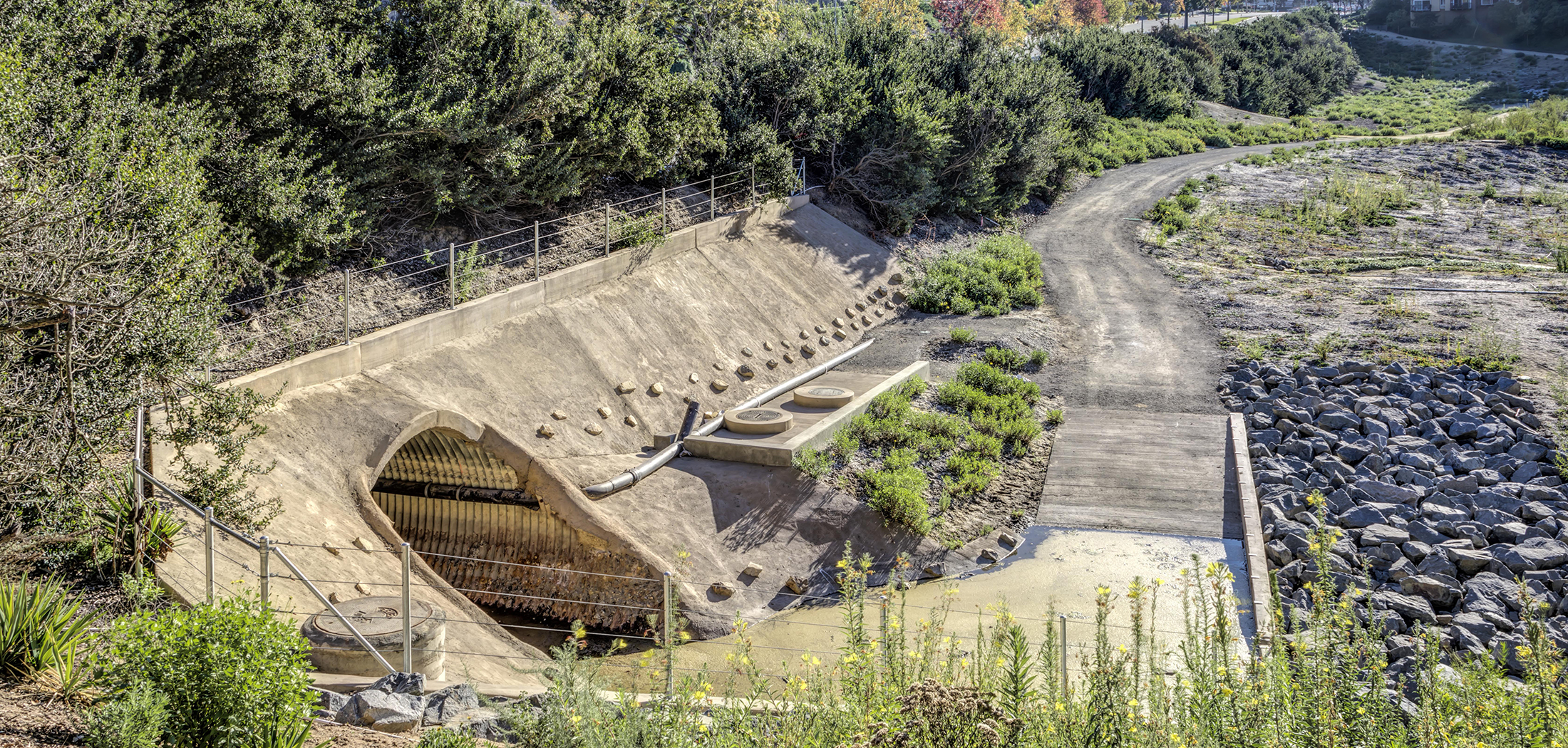SOLUTION
The project’s dormant status changed when Burns & McDonnell learned of an Orange County Transit Authority grant program funding the removal of transportation-related pollutants that entered local waterways during storm events. While the grant funds were designated for transportation-related pollutant removal, we envisioned a way to integrate multiple best management practices into a treatment train that would solve two issues at once: transportation-related pollutants would be removed from Jamboree Road runoff during storm events and selenium would be removed from Big Canyon Creek during dry weather.
Working on the City of Newport Beach’s behalf, we wrote a grant proposal for — and were awarded — a $2.3 million grant to design and construct a solution capable of removing these pollutants from Big Canyon Creek.
Newport Beach officials, meanwhile, expressed interest in pursuing a watershed approach to its water quality issues. At the city’s urging, our biologists and hydrologists studied the 1,200-acre watershed to identify sources of selenium that flowed into the creek. Extensive sampling revealed a selenium hot spot — a 50-yard valley in the creek downstream of a golf course — where the selenium concentration in surface waters was four times that found elsewhere.
Our engineers then designed a solution that directed dry-weather flows in the creek to simply bypass the hot spot. That diversion alone would dramatically reduce the selenium concentration in the downstream receiving waters. A second diversion pipe installed at the base of the selenium hot spot diverted the high-selenium water to the sanitary sewer. This solution enabled the city to divert and treat 100 percent of the flow from the selenium hot spot — far exceeding the project goals.
Our solution also addressed:
Wet weather flows — To prevent transportation-related pollutants from entering the creek during storm events, the team realigned nearby Jamboree Road’s outfalls. They now pass through a stormceptor system and 0.6-acre subterranean treatment wetland that has been planted with native vegetation and lined with a membrane to keep toxic materials from entering the groundwater. Clean water leaving the treatment cell passes through open ephemeral wetlands and back to the creek by way of surface flows or groundwater infiltration.
Stream reconstruction — Downstream of Jamboree Road, the stream was realigned, and banks were stabilized, slowing the flow of water and reducing erosion. The creek was also reconnected to the flood plain so water can naturally percolate into the groundwater.
SPECIALIZED SERVICES
- Grant identification and writing
- Habitat restoration
- Identify selenium hot spots
- Natural treatment system design
- Permitting and California Environmental Quality Act documentation
RESULTS
Using low-cost, green solutions, the City of Newport Beach is solving the complex mix of environmental problems that were damaging Big Canyon Creek and polluting the water it discharged into an environmentally sensitive coastal region.
The Big Canyon and Water Quality Improvement Project met the city’s needs on multiple fronts:
Selenium and pollutant reduction — Since the project’s completion in June 2017, initial dry-weather monitoring indicates a fourfold reduction in selenium concentrations in Big Canyon Creek. Ongoing wet-weather monitoring will test the project’s effectiveness in reducing stormwater pollutants.
Streambed and bank stabilization — The project has re-established the functionality and native habitat of Big Canyon Creek. The stream has been realigned and its banks stabilized with eco-friendly vegetated soil revetments that reduce erosion, prevent stream incision and enhance recruitment of native vegetation, supporting its long-term sustainability.
Habitat restoration — Six acres of riparian habitat have been restored by removing invasive species, amending the degraded soil in the flood plain and replanting it with native vegetation. The restored area has been connected to a larger trail system to integrate the project with the Newport Bay Ecological Reserve, and informational signage has been added to enhance public awareness of urban streams and promote environmental stewardship of the area. Thus, the project provides multiple benefits to the environment and the community.
